This week we explored clay in many different ways! Each class focused on a different clay technique, based on the ages of the kids. The youngest 1s class had their first clay experience- mostly poking, pinching, cutting, and getting to know the clay.
The older 1s/early 2s class started off learning about leaf prints. They used a rolling pin to press leaves into the clay to make a print. Later on, I offered them some “treasures” (buttons, rhinestones, and popsicle sticks) to decorate their leaf prints.
The 2s class started off making pinch pots. They shaped the pots by pinching with their thumbs and fingers, then they decorated their pots with buttons, rhinestones, and glitter.
They were so proud of their pinch pots!!
The older 2s/early 3s class worked on building sculptures with toothpicks and wooden skewers. I showed them how to shape the clay into balls and coils while they tinkered with connecting and stabilizing the shapes. We did this same activity a few months ago and it’s so great to see how their composition and ability to construct has evolved.
In the oldest class (3s/4s) we experimented with clay etching. This will be a three week process before the final product is ready to take home. First the children drew a design with a toothpick into a block of clay. Next week they will paint the clay and let it dry. Finally on the last week, they will sand down the top layer, leaving only the deep lines painted. I’ve never tried this before, so I’m super curious to see how it will turn out!
After each class worked on these very different techniques, they were all given new clay for the chance to play around and experiment in their own ways. Learning technique is important, but it’s not worth much if the kids don’t get a chance to mess around afterward and test all that they have learned.
And of course water is a very important addition to the clay free-play time!
If you ever are looking for an activity that is guaranteed to keep kids busy for at least an hour, just give them some silky modeling clay, and plenty of water. The sensory experience is addictive!

































































































































































































































 .
.




